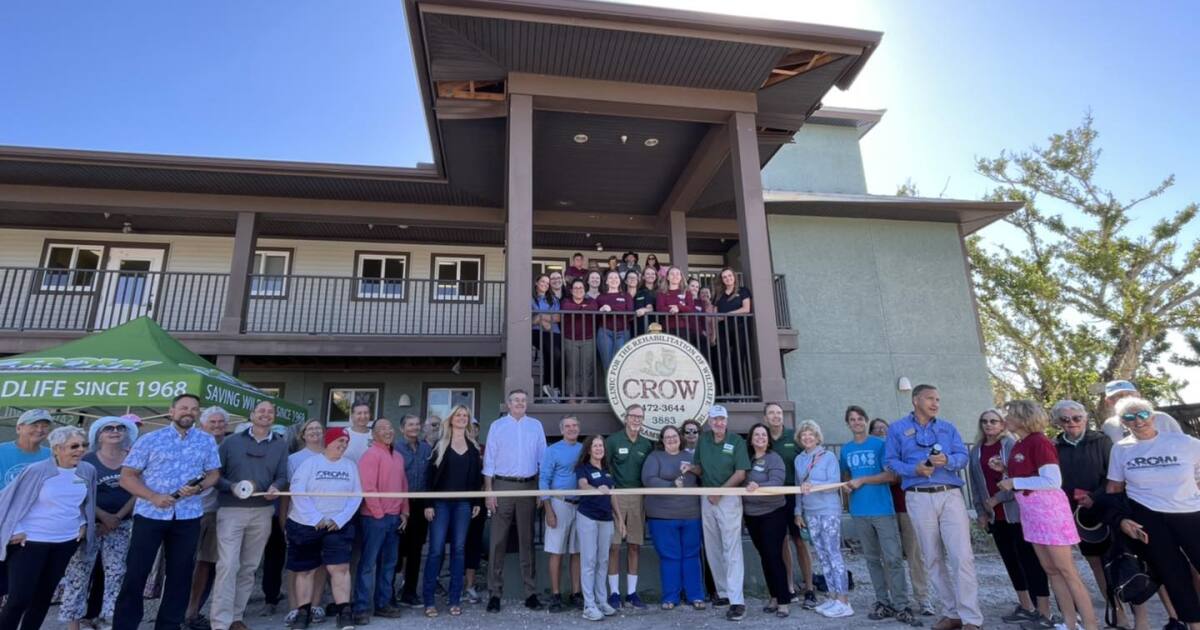South Florida is known to have one of the most biodiverse ecosystems in the world. From its beaches and reefs to its everglades, you can find a wide range of animals that call Florida home. Sharing Florida with so many animals means that there are lots of instances where a wild animal gets hurt, whether naturally or due to human interference. If you come across an injured animal, would you know what to do or whom to call?
The Clinic for Rehabilitation of Wildlife, or CROW, has been a functioning facility since 1981 on Sanibel. The facility includes a teaching hospital and visitor education center. CROW accepts all injured native wildlife. The staff at CROW works to save the animals through state-of-the-art veterinary care, education, research, and conservation medicine. Each year, CROW sees over 6,000 patients, covering more than 200 species of injured, sick, or orphaned wildlife.
When September 2022, Hurricane Ian swept through Southwest Florida, CROW was one of the many places affected. Now more than 14 months later, CROW is rebuilding and recovering still, while continuing to care for wildlife.
“We’re lucky that our hospital is built to withstand category five hurricanes, which is great, it did,” Dr. Robin Bast, staff veterinarian at CROW, said. “It’s just the water and the storm surge that you can’t really account for. So that was our biggest problem here is that even with the storm doors that we put up, at one point the water was so strong that it pulled one of the storm doors off and we got water in downstairs.”
Hurricane Ian produced up to 18 feet of storm surge in parts of coastal Lee County. Dr. Bast said that CROW was fortunate because the hospital is not right on the coast of Sanibel Island, and is surrounded by mangroves. She said the damage could have been much worse.
“Our outdoor enclosures, which is where a lot of our patients go during the second half of their rehab, all sustained some level of damage,” Dr. Bast said. “Either they were completely wiped out or they were just uninhabitable for patients for some time. So we knew that was going to be a long process in terms of redesigning those and actually getting them built.”
During the storm, staff and volunteers continued to care for animals, and then treated new patients after the storm.
“There were a lot of different people going into making us successful at that point,” Breanna Frankel, Wildlife Rehabilitations Manager and Admissions specialist at CROW, said. “For a while, after the hurricane, everyone had animals with them, whether it was at the hotel that students and staff members stayed at, and I had all sorts of ICU large birds of prey at my house and in my garage. I accumulated all of our animal ambassadors and tortoises and all these other things.”
Frankel said it was a unique experience. “It was kind of like we could just keep going on with life and it was kind of nice to actually focus on the animals rather than the devastation,” she said. “I watched my fence blow away and my trees come down. Luckily nothing bad happened to my house, but I was working with animals and putting in those hours. It’s always interesting heating up formulas when you don’t have power.”
Now CROW is rebuilding. The visitor education center, hospital, and student housing sustained minimal damage thanks to hurricane readiness plans. Volunteers helped to rebuild the outdoor enclosures. And CROW found temporary space at the Animal Refuge Center in North Fort Myers.
If you found an injured animal would you know what to do? Naples resident Ashley Pond said she is an animal lover with a rabbit of her own.
“If a baby bird was out of its nest or the animal looks like it’s definitely going to be ok and just needs help I would probably just Google a wild animal rescue,” Pond said. “But if it was a situation where I could tell the animal was absolutely dying, which has happened once to me with a baby owl, which broke my heart, I did help humanely put the animal down. If it was 50/50 though I would just consult Google and see what my resources are and who I should call.”
According to Dr. Robin Bast and Rehabilitation Manager Breanna Frankel at CROW, here is what you should do.
“It’s a multi-step process and it depends on the individual circumstances and the species you find,” said Dr. Bast. The first thing you should do is call CROW and describe the situation you’re seeing. They can try and guide you through the situation and whether the animal needs to be rescued.
“If it does need to be rescued, they will try and walk you through how to do the rescue yourself and it can be pretty easy even though slightly intimidating.”
Once you have the animal contained, CROW has six drop-off sites around Lee County. Those are small animal dog and cat clinics that serve as a holding point so you don’t have to drive to Sanibel with the animal. Instead, volunteers will drive out and pick up the animals at the clinics and bring them to CROW for treatment.
If you find an animal during CROW’s after hours, the website has a section called
“Found an Animal.” It will guide you on steps to follow. Information includes how to rescue animals from squirrels and bunnies to pelicans and birds of prey.
For more information on CROW, visit Crowclinic.org
This story was reported and written as part of the Democracy Watch program, a collaboration between FGCU Journalism and WGCU News.
The writer can be reached at [email protected]
